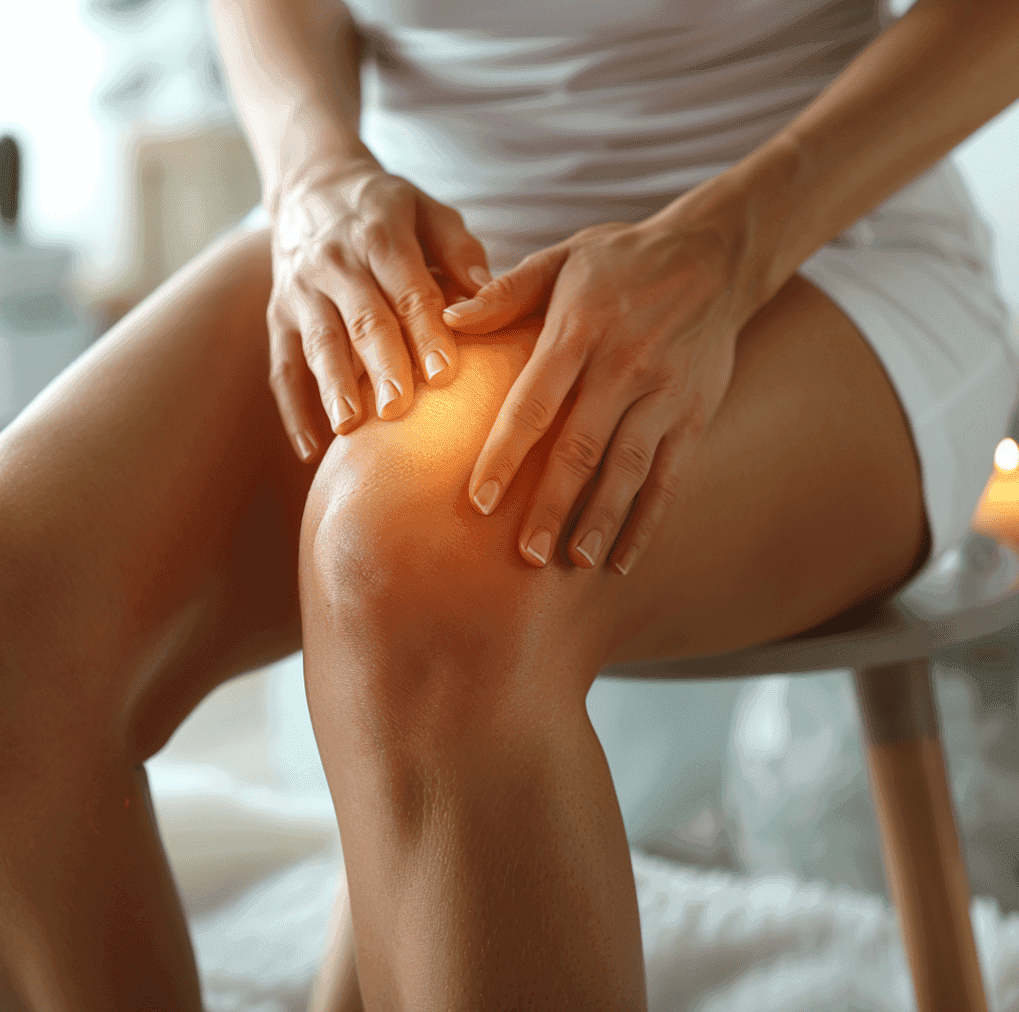Restless Leg Syndrome (RLS), also known as Willis-Ekbom Disease, is a neurological disorder characterized by an irresistible urge to move the legs, typically accompanied by uncomfortable sensations. These sensations have been described as crawling, tingling, or aching and often worsen during rest and inactivity, particularly at night.
This condition affects a significant portion of the population, with varying degrees of severity, and can significantly impact the quality of life of those afflicted. In this article, you will learn about Chiropractic Approach to Restless Leg Syndrome.
Definition and Prevalence
RLS is recognized by both the International Restless Legs Syndrome Study Group (IRLSSG) and the National Institutes of Health (NIH), highlighting its prevalence and the attention it demands within the medical community. Epidemiological studies suggest that RLS affects up to 10% of the United States population, with similar figures reported in other countries, indicating a widespread prevalence.
Impact on Quality of Life
The impact of RLS on quality of life can be profound, affecting sleep quality, mental health, and daily functioning. The nocturnal exacerbation of symptoms often leads to significant sleep disturbances, resulting in daytime fatigue, mood changes, and decreased productivity. The persistent discomfort and sleep disruption can also lead to anxiety and depression, further compounding the condition’s impact.

Epidemiology and Statistics
The epidemiology of RLS reveals a condition that spans across ages, genders, and ethnicities, though it is more commonly reported in women and older adults. Genetic predisposition, lifestyle factors, and certain health conditions can influence the risk and severity of RLS symptoms.
Global Incidence and Demographics
RLS is a global concern, with studies reporting varying incidence rates across different populations and regions. While the condition is more prevalent in Western countries, emerging research indicates it is not uncommon in other parts of the world. This variability may be attributed to genetic factors, cultural differences in reporting symptoms, and awareness levels among healthcare providers and the public.
Economic and Healthcare Implications
The economic and healthcare implications of RLS are significant, with increased healthcare utilization, prescription medication costs, and lost productivity. The condition often requires ongoing management, including medical visits, diagnostic tests, and treatments, contributing to its economic burden.
Symptoms and Causes of RLS
Identifying the Symptoms
The symptoms of RLS are distinctive, primarily revolving around the compelling need to move the legs, usually in response to uncomfortable sensations. These symptoms are predominantly nocturnal, affecting individuals’ ability to fall asleep or remain asleep.
Characteristic Symptoms of RLS
Patients with RLS often describe their symptoms as sensations of crawling, tingling, pulling, or throbbing within the legs. These sensations typically occur during periods of rest or inactivity and are relieved, at least temporarily, by movement.
Variability and Severity of Symptoms
The severity of RLS symptoms can vary widely among individuals, from mild, occasional discomfort to severe, nightly distress. For some, RLS is a minor annoyance; for others, it is a major impediment to sleep and, by extension, to overall health and well-being.
Exploring the Causes
While the exact cause of RLS is still being researched, several factors, including genetic, neurological, and environmental factors, have been identified that may contribute to its development.
Genetic Contributions
Research indicates a strong genetic component to RLS, with family history being a significant risk factor. Several specific genetic markers have been linked to increased risk of the condition, suggesting that RLS may be inherited in many cases.
Neurological Factors
Neurological imbalances, particularly involving the neurotransmitter dopamine, are believed to play a central role in RLS. Dopamine is involved in controlling muscle movement, and disruptions in its pathways may lead to the symptoms of RLS.

Iron Deficiency and RLS
There is also a well-established link between iron deficiency and RLS. Iron plays a crucial role in dopamine synthesis and function, and low levels of iron within the brain have been associated with increased risk and severity of RLS symptoms.
Risk Factors and Aggravators of RLS
Several factors can increase the risk of developing RLS or exacerbate its symptoms. These include lifestyle choices, underlying health conditions, and certain medications.
Lifestyle and Environmental Influences
Lifestyle factors such as insufficient sleep, excessive caffeine or alcohol consumption, and tobacco use have been associated with worsening RLS symptoms. Environmental factors, including prolonged periods of sitting or inactivity, can also trigger or exacerbate symptoms.
Medications and Substance Use
Certain medications, including some antidepressants, antihistamines, and anti-nausea drugs, can worsen RLS symptoms. Substance use, particularly alcohol and nicotine, can also have a negative impact on RLS.
What Aggravates RLS?
Identifying and managing the factors that aggravate RLS can be crucial in controlling the condition. This involves a comprehensive approach that includes lifestyle modifications, medication review, and addressing underlying health issues.
Exacerbating Factors
In addition to the factors mentioned above, other conditions such as pregnancy, renal failure, and peripheral neuropathy can exacerbate RLS symptoms. Stress and anxiety can also worsen the condition, creating a cycle of sleep disturbance and increased symptom severity.
Managing and Minimizing Aggravators
Effective management of RLS involves identifying and minimizing these aggravating factors. This can include making lifestyle changes, such as improving sleep hygiene, reducing caffeine and alcohol intake, and quitting smoking. Additionally, reviewing and adjusting medications that may worsen RLS symptoms can be beneficial.
Diagnosis and Differential Diagnosis of RLS
The diagnosis of RLS is primarily clinical, based on patient history and symptom description. The International Restless Legs Syndrome Study Group (IRLSSG) has established diagnostic criteria to aid in the identification of the condition.
Clinical Diagnosis of RLS
The diagnostic criteria for RLS include an urge to move the legs usually accompanied by uncomfortable and unpleasant sensations, symptoms that begin or worsen during periods of rest or inactivity, partial or total relief of symptoms by movement, and symptoms that are worse in the evening or night than during the day.
Importance of Medical History and Physical Exam
A thorough medical history and physical examination are crucial in diagnosing RLS. This includes discussing symptom patterns, family history, lifestyle factors, and any underlying conditions that may contribute to symptoms. In some cases, further testing may be required to rule out other conditions or to identify underlying causes such as iron deficiency.
Differential Diagnosis
Distinguishing RLS from other conditions with similar symptoms is an important part of the diagnostic process. This includes differentiating RLS from conditions like peripheral neuropathy, varicose veins, and leg cramps.
Distinguishing RLS from Similar Conditions
A careful evaluation of symptoms, along with specific clinical criteria, helps differentiate RLS from other conditions. For example, the relief of symptoms with movement is a hallmark of RLS that is not typically present in other conditions.
Role of Diagnostic Tests
While there are no specific tests for RLS, certain tests can be helpful in the diagnostic process. These may include blood tests to check for iron deficiency or kidney function, nerve conduction studies to rule out peripheral neuropathy, and sleep studies in cases where sleep disturbance is a significant concern.
Chiropractic Approach to Restless Leg Syndrome
Conventional Treatment Methods
The treatment of RLS focuses on relieving symptoms and improving quality of life. This often involves a combination of medication, lifestyle changes, and addressing any underlying conditions.
Pharmacological Treatments
Medications used to treat RLS include dopaminergic agents, which can help balance dopamine levels in the brain, and iron supplements for those with iron deficiency. Other medications, such as anticonvulsants, benzodiazepines, and opioids, may be used in more severe cases or when other treatments are not effective.
Lifestyle Modifications and Home Remedies
Lifestyle changes can play a significant role in managing RLS. This includes establishing a regular sleep routine, engaging in moderate exercise, and avoiding triggers such as caffeine, alcohol, and tobacco. Warm baths, leg massages, and the use of heating pads or cold packs can also provide relief for some individuals.
Integrative and Alternative Therapies
In addition to conventional treatments, many individuals with RLS find relief through integrative and alternative therapies. These may include acupuncture, yoga, and meditation, which can help reduce stress and improve sleep.
Role of Exercise and Physical Therapy
Exercise and physical therapy can be beneficial in managing RLS symptoms. Moderate, regular exercise may improve symptoms, while physical therapy can help address specific muscle or nerve issues contributing to discomfort.
Nutritional Supplements and Diet
Dietary changes and nutritional supplements, such as magnesium or vitamin B12, may also help some individuals manage their RLS symptoms. However, it’s important to discuss these options with a healthcare provider to ensure they are safe and appropriate.
Chiropractic Care for RLS
The Chiropractic Perspective
Chiropractic care offers a unique perspective on treating RLS. It focuses on improving spinal alignment and nerve function to alleviate symptoms. While not a cure for RLS, chiropractic adjustments may help reduce the severity and frequency of some individuals’ symptoms.
Spinal Health and RLS
Chiropractors believe spinal misalignments (subluxations) can affect nerve function and contribute to conditions like RLS. Correcting these misalignments, chiropractic care aims to improve nerve signal flow and overall body function, potentially reducing RLS symptoms.

Chiropractic Approaches to Managing RLS
Chiropractic treatment for RLS typically involves a combination of spinal adjustments, massage therapy, and lifestyle advice. These treatments aim to reduce nerve irritation and improve circulation, which can help alleviate the symptoms associated with RLS. Chiropractors may also provide exercises and stretches that can be done at home to help manage symptoms.
When to Consider Chiropractic Care for RLS
Signs that Chiropractic Care May Help
Individuals with RLS who have not found relief through conventional treatments may consider chiropractic care as an adjunct therapy. Signs that chiropractic may be beneficial include persistent symptoms despite medication, a desire for a non-pharmacological approach, and the presence of spinal or musculoskeletal issues that could be contributing to symptom severity.
Indications for Chiropractic Evaluation
A chiropractic evaluation can be particularly beneficial for individuals who experience RLS symptoms in conjunction with back pain, poor posture, or previous spinal injuries. Chiropractors can assess whether spinal misalignments may be affecting nerve function and contributing to RLS symptoms.
Integrating Chiropractic Care with Traditional RLS Treatment
For the best outcomes, chiropractic care should be considered as part of a multidisciplinary approach to managing RLS. Collaboration between chiropractors, physicians, and other healthcare providers is essential to ensure that all aspects of the condition are addressed and that treatments complement each other effectively.
Developing a Comprehensive Care Plan
A comprehensive care plan for RLS may include a combination of medication, lifestyle changes, chiropractic care, and other therapies tailored to the individual’s symptoms, health status, and treatment preferences. This holistic approach aims to not only alleviate symptoms but also improve overall health and well-being.
Collaboration Between Chiropractors and Medical Professionals
Effective management of RLS often requires collaboration between chiropractors and medical professionals. By sharing insights and treatment strategies, healthcare providers can develop a more comprehensive and effective care plan for the patient.
Patient Education and Self-Care Strategies
Education is a crucial component of managing RLS. Healthcare providers, including chiropractors, play a key role in educating patients about the nature of their condition, treatment options, and self-care strategies that can help manage symptoms. Empowering patients with knowledge and tools for self-management is essential for long-term symptom control and quality of life improvement. In conclusion, Restless Leg Syndrome is a complex condition that can significantly impact an individual’s quality of life.
While conventional treatments are effective for many, chiropractic care offers an alternative or complementary approach that may benefit some individuals, especially those seeking a holistic approach to managing their symptoms. As research continues to evolve, the integration of chiropractic care into comprehensive treatment plans for RLS holds promise for providing relief and improving the well-being of those affected by this challenging condition.

